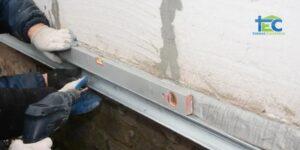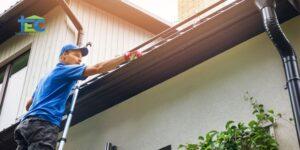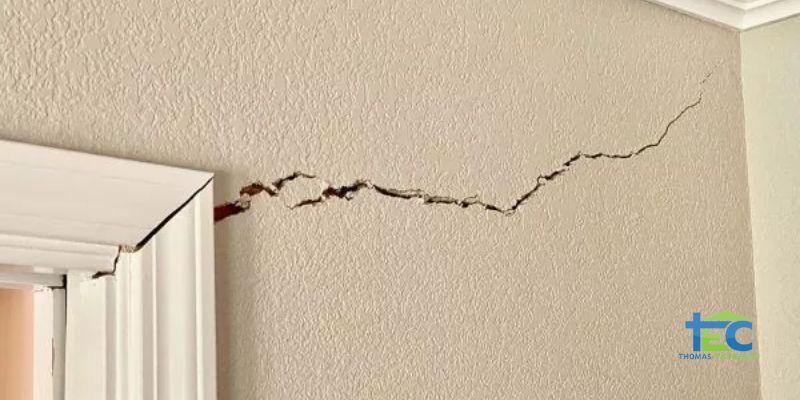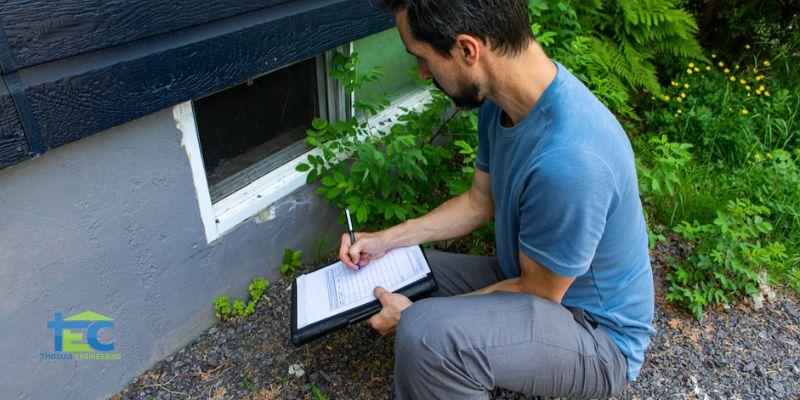
Always remember that you need to maintain your home’s foundation. Correcting faults is more expensive and complicated when compared to keeping up with them. Your foundation is important since it supports the integrity of everything within your home. The worst thing about a lousy foundation is that everything built on it is affected, which is why you should maintain it.
Essential Techniques for Maintaining and Repairing Your Home’s Foundation

Maintenance is required to protect your house against foundation problems, water damage, and flooding. Following these techniques by experts will let you put plans in place to prevent issues with your foundation.
1. Regular inspections
Early detection of foundational problems is crucial. Conduct an intensive inspection at least twice yearly, looking for cracks or watermarks. Check the walls, ceilings, windows, and doors for misalignment. Any of these signs indicate existing cracks and the need to fill in these cracks before foundation shifts happen.
Regular assessments allow homeowners to deal promptly with foundational issues in a way that does not endanger structures and keeps repair costs minimal. Regular inspections also maintain a home’s longevity and stability, guaranteeing its worth and giving homeowners peace of mind.
2. Clear gutters and downspouts

There must be good drainage for clear gutters and downspouts. They are very important since foundation damage should be avoided at all costs. The water cannot run away from your home because of litter, including fallen leaves in the pipes that prevent proper draining. Gutter cleaning is an essential part of general house maintenance.
It is also a simple yet crucial preventive measure for ensuring that water does not block the flow outward. Thereby this helps to sustain the integrity and durability of your property. To keep your home in good condition, you should incorporate gutter cleaning into the usual maintenance routines at your home.
3. Install a sound drainage system
Poor drainage is among the major causes of foundation problems. This is because the soil expands when water surrounds your house, putting pressure on the foundation walls. The resultant moisture may cause an uplift, adversely affecting a foundation while it shifts underwater pressure.
Eventually, this results in fissures and different kinds of damage. Ensuring this in the home includes having a good drainage pattern. These must involve adequately functioning gutters and downspouts that drain from the foundation. This path will ensure that the water flows away from the house and will reduce the accumulation of pressure due to the saturation of soils.
4. Level the slope around your home’s foundation
It is important to correct the slope around your house. If the area slopes toward your foundation, you must level it by adding earth on the low side and grading it. It improves hydraulics and ensures that water does not pool by the foundations.
Addressing the slope helps reduce moisture problems that may damage the foundation of your house. It is a preventive act or protection that will help your building avoid being damaged by water deposit accumulation for a longer time.
5. Maintain a consistent moisture level
Ensuring sufficient soil moisture around your home is important to prevent foundation problems. The foundation may end up cracking from the ground and drying so much that it contracts and draws away from the building. Also, excessively wet soil presses on the foundation and causes cracking.
You must maintain balanced moisture on your foundational levels to preserve your overall structure. Any damage can be avoided by implementing a water control program. Adopting such an approach makes sure that there is no fluctuation in the levels of soil around the foundation.
6. Control tree roots
Even though tree roots are a problem for home foundations, they also pose a risk since they absorb much water from the ground. If this moisture loss is located near the foundation, it could cause several problems. Therefore, any potential or existing trees should be determined according to their size, species, proximity, or location while planting new ones.
Do not plant large trees near your house since their slow development may lead to significant foundation issues for several decades. Strategic planning acts as a guardrail to prevent structural problems that can arise due to root intrusion or an imbalanced water content during the placement of trees.
7. Make documentation
If the foundation gets damaged, thorough documentation is necessary. Take more pictures and video evidence of damages, seek estimates from different contractors for repair services at a lower price, and keep any relevant records of completed tasks. The detailed record-keeping comes in very handy if your claim gets rejected.
Also, one preventive measure you can take is always to keep an updated “foundation log.” Doing so will help ensure that the integrity of your foundation remains intact throughout your ownership period. Moreover, this well-documented past becomes an important asset when you put it up for sale, as potential buyers become sure that the condition of the construction is good.
8. Seek professional help
You must seek professional assistance to maintain your foundations and repair processes. Professional contractors have the skills to evaluate foundation problems and can spot other related problems that may not present themselves at first sight.
With their knowledge, they can put permanent and lasting solutions that stop further destruction. Professional services have an added advantage since modern technology and skilled workers are employed. Therefore, there are reduced chances of accidents or mistakes occurring during work.
Conclusion
Implementing the necessary home foundation upkeep and renovation methods is crucial to preserving your house’s structural integrity. Expert advice is always important; it helps create preventive measures and maintains your property’s durability and market value for years.





